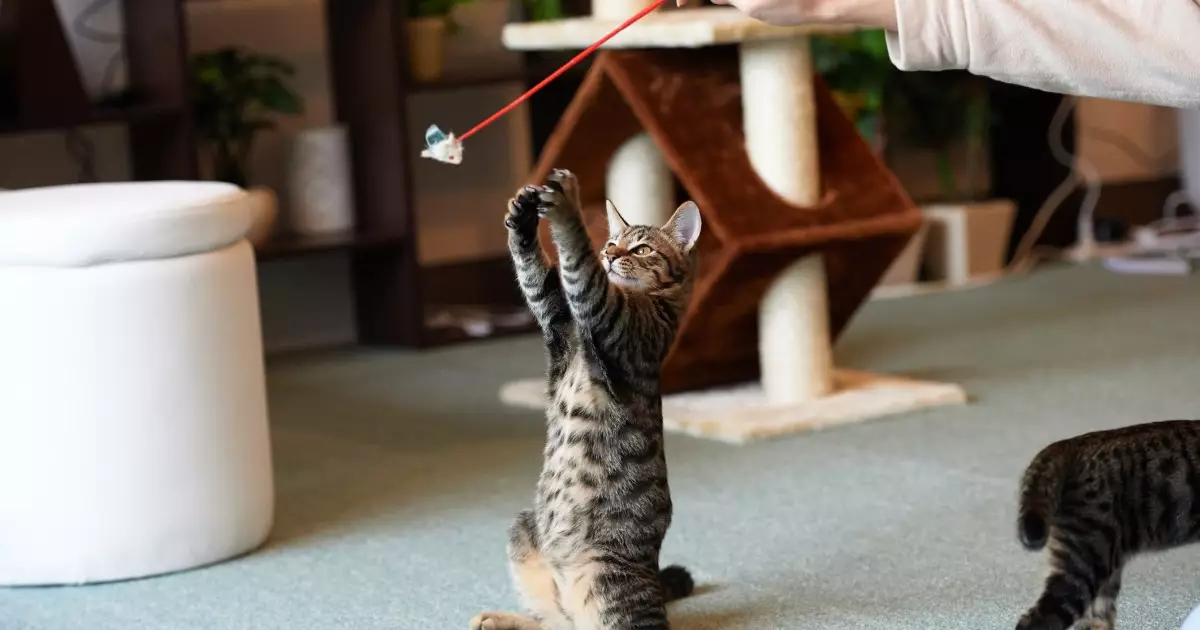Cats are beloved companions that enrich our lives with their playful antics and affectionate behaviors. Just as children find joy and learning through toys, our feline friends engage in playtime activities that provide mental stimulation, physical exercise, and an outlet for their natural instincts. However, as a responsible cat parent, it is essential to cultivate a safe play environment that minimizes risks while maximizing enjoyment for your pet. This article explores the importance of mindful play with your cat and offers essential safety tips to enhance your feline friend’s playtime experience.
Play is fundamental to a cat’s well-being, serving as a means for them to express predatory behaviors, burn off energy, and explore their surroundings. Activities such as stalking, chasing, and pouncing mirror their instincts in the wild. However, play must be balanced and conducted with caution. Providing a variety of toys tailored to different play styles is crucial. For instance, wand toys can enhance interactive play between you and your cat, while small, mouse-sized toys facilitate independent play and mimic the hunting process. However, keeping these play sessions brief—around 10 to 20 minutes—can prevent exhaustion and reduce the risk of boredom, ensuring your cat remains engaged and active without overwhelming them.
Choosing the Right Toys
Selecting safe toys is perhaps the most vital aspect of playtime. While many toys are designed specifically for cats, not all are inherently safe. Toys with strings, rubber bands, or small parts introduce choking hazards and other risks. Cats can easily ingest long strings, leading to serious gastrointestinal complications. Therefore, it’s paramount to select toys that are robust and free of detachable pieces that could be swallowed. Always inspect toys for wear and tear, discarding any that show signs of damage.
When introducing new toys, observe your cat’s behavior. Some cats may react aggressively to certain toys or materials, causing unintended confrontations if more than one cat is present. Testing their reactions to interactive items, especially those made from catnip, should be done individually to prevent discord and ensure a safe play environment.
The Dangers of Conventional Playthings
While it may seem convenient to purchase toys without much thought, many commercially available cat toys contain harmful chemicals or materials that can pose significant health risks. Before purchasing, it is essential to check the origins of these toys. Products manufactured in countries with lax safety regulations can often include toxic substances that could harm your pet. As a general guideline, opting for toys made in countries with stringent production standards, like the United States, is advisable. Additionally, if a toy emits a strong chemical odor, it’s wise to avoid it altogether, as this could signal the presence of harmful materials.
Creating a Safe Play Environment
The physical space where your cat plays is just as important as the toys themselves. Before initiating play, ensure the area is free of hazards such as sharp objects, unstable furniture, and small items that could be ingested. When using laser pointers, great care should be taken not to shine the light directly into their eyes, as this can lead to permanent damage in mere seconds. Instead, consider using reflective surfaces for a less harmful alternative.
Furthermore, while cats enjoy chasing after balls, particularly in confined spaces, remember to tidy up toys at night to avoid disruptions. Cats are notoriously known for their late-night antics, and a rogue ball could lead to a chaotic night for both you and your pet if it interrupts your sleep.
In addition to store-bought toys, many everyday household items can provide hours of entertainment for your cat. Crumpled paper, cardboard boxes, and paper bags (with handle removed for safety) can create a stimulating environment without breaking the bank. Not only do these unconventional toys promote greener choices by reducing waste, but they also invoke your cat’s natural curiosity. It’s remarkable how something as simple as a cardboard box can captivate a feline mind.
Regular Toy Rotation and Maintenance
Implementing a toy rotation system can keep your cat’s playtime fresh and exciting. Constant exposure to the same toys can lead to boredom. Rotate toys periodically, allowing old favorites to reintegrate into your cat’s routine. This, coupled with diligent maintenance—replacing worn or damaged toys—will enhance their safety and ensure continuous engagement.
Providing your cat with a stimulating play environment not only satisfies their natural instincts but also fosters a strong bond between you and your pet. By prioritizing safety, choosing appropriate toys, creating a secure play area, and innovating with household items, you can enhance your cat’s quality of life. Remember, a well-stimulated cat is a happy cat. Each thoughtful decision you make in their playtime will lead to endless moments of affection, fun, and joy in your shared journey.


Leave a Reply